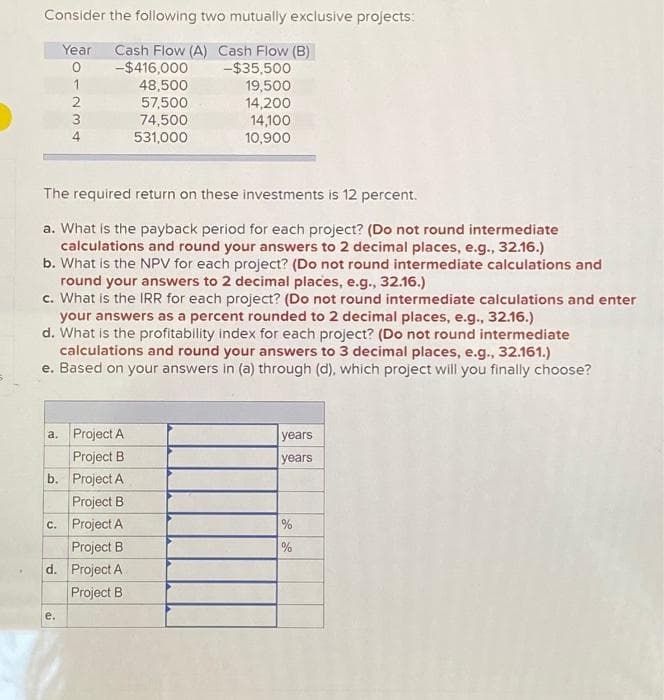Consider the following two mutually exclusive projects: Year Cash Flow (A) Cash Flow (B) 0-$416,000 -$35,500 19,500 14,200 14,100 10,900 1 2 234 3 4 e. The required return on these investments is 12 percent. a. What is the payback period for each project? (Do not round intermediate calculations and round your answers to 2 decimal places, e.g., 32.16.) b. What is the NPV for each project? (Do not round intermediate calculations and round your answers to 2 decimal places, e.g., 32.16.) c. What is the IRR for each project? (Do not round intermediate calculations and enter your answers as a percent rounded to 2 decimal places, e.g., 32.16.) d. What is the profitability index for each project? (Do not round intermediate calculations and round your answers to 3 decimal places, e.g., 32.161.) e. Based on your answers in (a) through (d), which project will you finally choose? a. Project A Project B b. Project A Project B c. Project A 48,500 57,500 74,500 531,000 Project B d. Project A Project B years years % %
Consider the following two mutually exclusive projects: Year Cash Flow (A) Cash Flow (B) 0 1 a. 2 3 4 The required return on these investments is 12 percent. a. What is the payback period for each project? (Do not round intermediate calculations and round your answers to 2 decimal places, e.g., 32.16.) b. What is the NPV for each project? (Do not round intermediate calculations and round your answers to 2 decimal places, e.g., 32.16.) c. What is the

Trending now
This is a popular solution!
Step by step
Solved in 3 steps with 2 images









